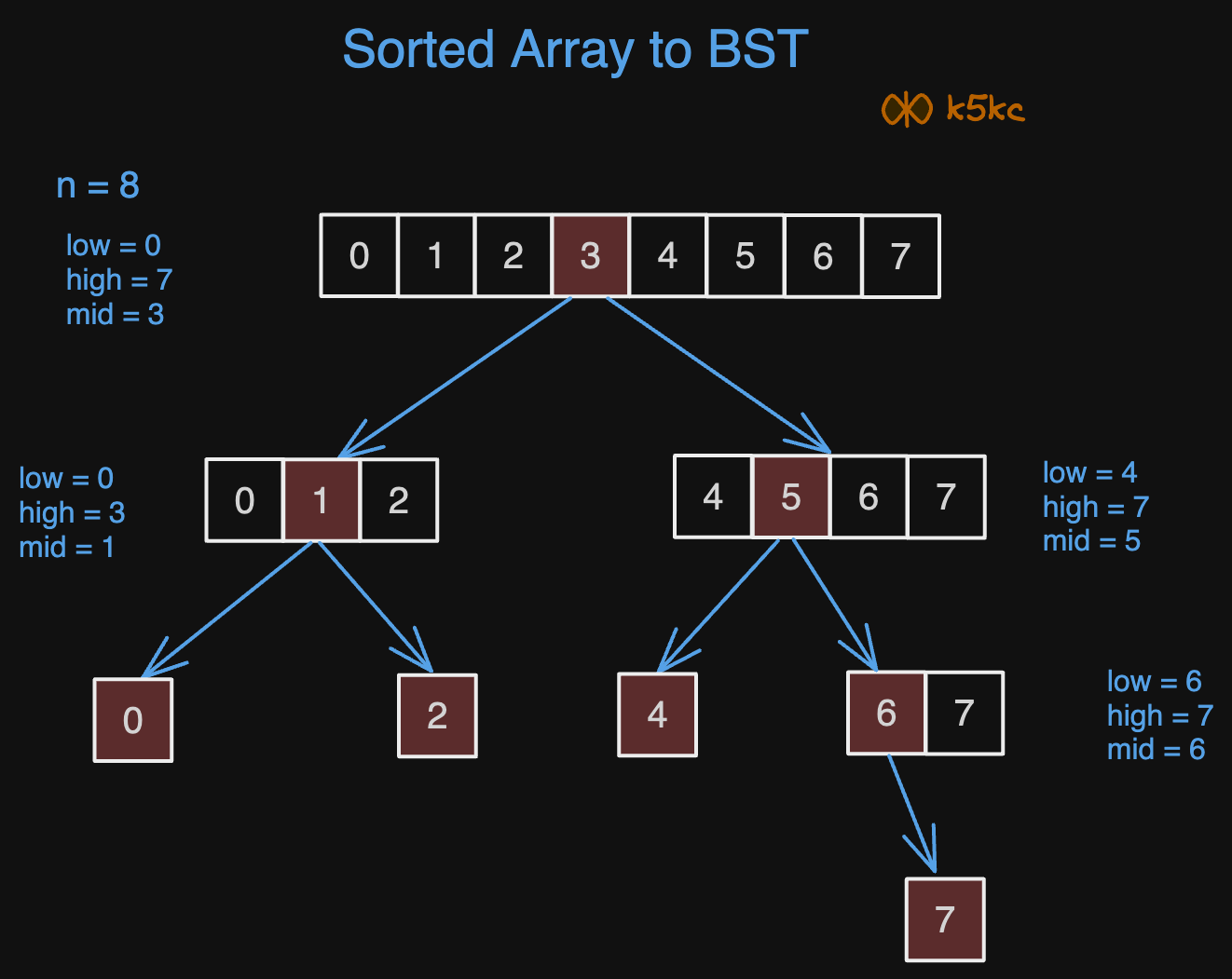Convert Sorted Array to height-balanced Binary Search Tree
Problem
Given an integer array nums where the elements are sorted in ascending order, convert it to a height-balanced binary search tree.
Examples
Example 1:
Input: nums = [1, 2, 3, 4, 5, 6]
Output: [3,2,5,1,null,4,6]
Explanation: [4,2,5,1,3,null,6] is also accepted.
These are the two height-balanced binary tree, with height = 3:
3
/ \
2 5
/ / \
1 4 6
OR
4
/ \
2 5
/ \ \
1 3 6
Note, that we may also get skewed binary search tree, but we don't want that, height = 6 is not minimum
1
\
2
\
3
\
4
\
5
\
6
Solution
Why minimal height is important?
We can perform a linear scan of the array, using the first element as the root and inserting subsequent elements into the tree. However, this would result in a skewed tree, with all nodes on one side, causing the tree height to equal the number of elements. Our goal is to keep the tree as balanced as possible.
Definition: Balanced Binary Search Tree BBST Data Structures
Method 1 - Recursive Preorder Traversal
Here are the steps:
- Find the middle element of the array.
- Make it root to ensure half of the array elements are on the left and half on the right.
- Recursively process the left half of the array and set it as
root.left. - Recursively process the right half of the array and set it as
root.right. - Return the root.

Here is the video explanation: <div class="youtube-embed"><iframe src="https://www.youtube.com/embed/zBUFWGfz07E" frameborder="0" allowfullscreen></iframe></div>
Code
Java
class Solution {
public TreeNode sortedArrayToBST(int[] nums) {
if (nums.length == 0) {
return null;
}
TreeNode head = helper(nums, 0, nums.length - 1);
return head;
}
public TreeNode helper(int[] nums, int low, int high) {
if (low > high) { // Done
return null;
}
int mid = (low + high) / 2;
TreeNode node = new TreeNode(nums[mid]);
node.left = helper(nums, low, mid - 1);
node.right = helper(nums, mid + 1, high);
return node;
}
}
Python
class Solution:
def sortedArrayToBST(self, nums: list[int]) -> 'TreeNode | None':
if not nums:
return None
def helper(low: int, high: int) -> 'TreeNode | None':
if low > high:
return None
mid = (low + high) // 2
node = TreeNode(nums[mid])
node.left = helper(low, mid - 1)
node.right = helper(mid + 1, high)
return node
return helper(0, len(nums) - 1)
Complexity
- ⏰ Time complexity:
O(n)wherenis the length of array - 🧺 Space complexity:
O(log n)as log n is the height of the tree.